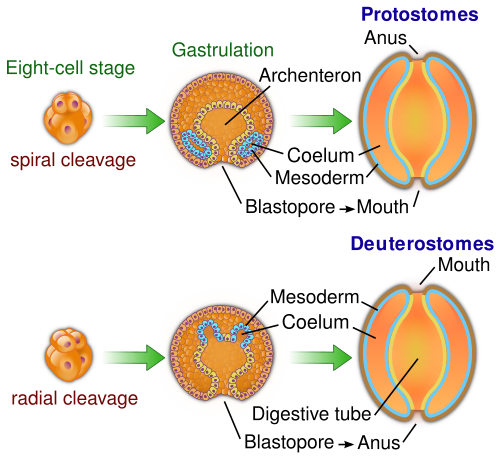Recently on Science Codex there appeared A new
fossil species found in Spain, which on reading turns out to be a new
Cloudinid, an order
of shelled creatures from the late Ediacaran. Cloudina shells are
of interest, showing bore holes made by predators, pointing to an evolutionary
arms race which may have driven the great diversification of phyla in the early
Cambrian.
The paper itself, in Precambrian Research, is entitled
A new
species of Cloudina from the terminal Ediacaran of Spain. What I find
interesting is the figure showing a central canal (presumably a gut) running
through the creature.

The presence of a gut points to what is to me is
one of the most intriguing mysteries of the time, namely how and when did the
differentiation between deuterostomes and protostomes arise?
Protostomes are by far the more numerous, both in abundance of species
and of individuals. Two major subgroups of the protostomes are the Lophotrochozoa whose
most spectacular members are the worms and molluscs, and the Ecdysozoa
containing the arthropods. Deuterostomes are less numerous, and include
starfish and ourselves. The two groups are distinguished by their embryonic
development.
I first became aware of the distinction through
reading Animals Without Backbones by Ralph Buchsbaum.
That was a Pelican (‘posh’ Penguin) book in two volumes from 1959. It was
really a lovely book, but alas I think the science has moved on so much,
especially in regard to classification, that I could hardly recommend it now as
a first textbook. But they did give me a basis for appreciating invertebrates,
including their embryological development.
I doubt if these particular
fossils will shed much light on the mystery, but I am intrigued
nonetheless.
http://ars.els-cdn.com/content/image/1-s2.0-S0301926809002174-gr9.jpg
http://upload.wikimedia.org/wikipedia/commons/thumb/6/65/Protovsdeuteros...




Comments